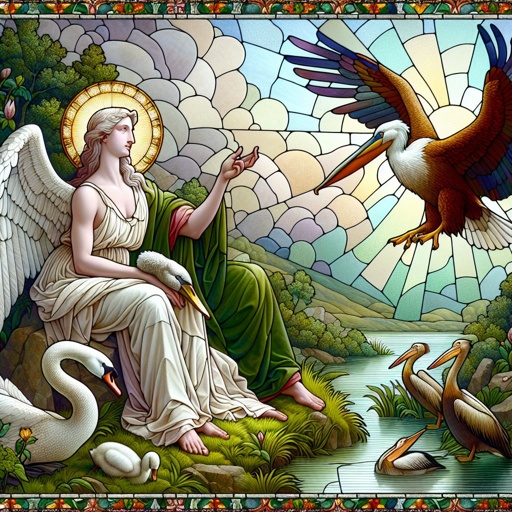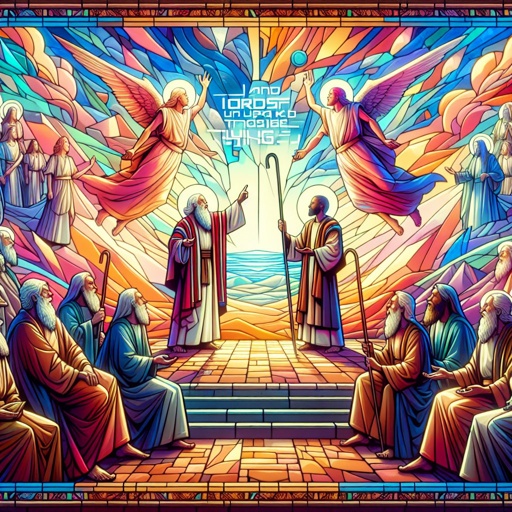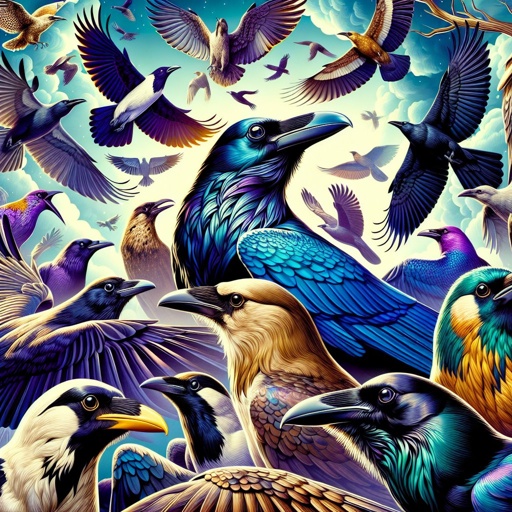What does Leviticus 11:14 mean?
"And the vulture, and the kite after his kind;" - Leviticus 11:14

Leviticus 11:14 - "And the vulture, and the kite after his kind;"
An image depicting a scene from Leviticus 11:14, specifically focusing on a vulture and a kite bird. The scene captures the distinct characteristics of these birds, their feathers, beaks, and eyes. The overall aura of the image should reflect the importance of their mention in the scripture. The style to imitate is digital art that uses sharp lines, vibrant colors, and detailed shading. The background could be a cloudy sky providing a context of their natural habitat.
Leviticus 11:14 (KJV)
"And the vulture, and the kite after his kind;"
The book of Leviticus is the third book of the Bible, and it is a part of the Torah, or the first five books of the Old Testament. The entire book of Leviticus is dedicated to the laws and regulations that the Israelites were to follow in order to maintain their holiness and to remain in right standing with God. Leviticus 11 specifically focuses on the dietary laws for the people of Israel, outlining which animals are clean and acceptable for consumption and which are unclean and should be avoided.
In this particular verse, Leviticus 11:14, two specific birds are mentioned: the vulture and the kite. The vulture is a large bird of prey, known for scavenging on the remains of dead animals, while the kite is another raptor known for its scavenging habits. Both of these birds were considered unclean and were not to be consumed by the Israelites.
The dietary laws in Leviticus served several purposes, both practical and symbolic. From a practical standpoint, some of the animals listed as unclean were more likely to carry diseases or parasites, making their consumption a health risk. By abstaining from these animals, the Israelites would have been protecting themselves from potential harm.
On a symbolic level, the dietary laws in Leviticus served to set the Israelites apart from the surrounding nations. By refraining from eating certain animals, the Israelites were demonstrating their obedience to God and their commitment to holiness. The act of choosing not to consume certain foods was a tangible way for the Israelites to show their dedication to following God's laws and to maintaining their distinct identity as His chosen people.
Furthermore, the dietary laws were a reminder of the Israelites' special relationship with God. By obeying these laws, the Israelites were acknowledging God's authority over them and their reliance on Him for their sustenance. This served as a constant reminder that they were dependent on God for all aspects of their lives, including their physical nourishment.
In the broader context of Leviticus, the dietary laws were part of a larger system of purity and holiness. The Israelites were called to be a holy people, set apart for God's purposes. This holiness was to be reflected in every aspect of their lives, including what they ate. By adhering to the dietary laws, the Israelites were demonstrating their commitment to holiness and their willingness to submit to God's standards.
The symbolism of the vulture and kite in this verse could also be interpreted as a representation of spiritual principles. Both of these birds were known for their association with death and decay. The mention of these animals could serve as a reminder to the Israelites of the importance of avoiding spiritual contamination and remaining focused on things that are pure and life-giving.
In conclusion, Leviticus 11:14 is a profound verse that holds significance on multiple levels. On a practical level, it outlines specific dietary restrictions for the Israelites. However, on a deeper level, it serves as a reminder of the Israelites' commitment to holiness and their special relationship with God. The mention of the vulture and kite, as unclean birds, serves as a symbolic representation of the Israelites' dedication to remaining pure and set apart for God's purposes. Through this verse, the Israelites were reminded of the importance of maintaining their spiritual and physical purity in every aspect of their lives.
Leviticus 11:14 Artwork

Leviticus 11:14 - "And the vulture, and the kite after his kind;"

Leviticus 14:11 - "And the priest that maketh him clean shall present the man that is to be made clean, and those things, before the LORD, at the door of the tabernacle of the congregation:"

Leviticus 14:55 - "And for the leprosy of a garment, and of a house,"

Leviticus 14:56 - "And for a rising, and for a scab, and for a bright spot:"

Leviticus 11:18 - "And the swan, and the pelican, and the gier eagle,"

Leviticus 14:1 - "And the LORD spake unto Moses, saying,"

Leviticus 5:14 - "¶ And the LORD spake unto Moses, saying,"

Leviticus 11:15 - "Every raven after his kind;"

Leviticus 11:17 - "And the little owl, and the cormorant, and the great owl,"

Leviticus 14:54 - "This is the law for all manner of plague of leprosy, and scall,"

Leviticus 11:30 - "And the ferret, and the chameleon, and the lizard, and the snail, and the mole."

Leviticus 26:14 - "¶ But if ye will not hearken unto me, and will not do all these commandments;"

Leviticus 14:33 - "¶ And the LORD spake unto Moses and unto Aaron, saying,"

Leviticus 11:19 - "And the stork, the heron after her kind, and the lapwing, and the bat."

Leviticus 14:57 - "To teach when it is unclean, and when it is clean: this is the law of leprosy."

Leviticus 9:11 - "And the flesh and the hide he burnt with fire without the camp."

Leviticus 14:26 - "And the priest shall pour of the oil into the palm of his own left hand:"

Leviticus 13:14 - "But when raw flesh appeareth in him, he shall be unclean."

Leviticus 11:16 - "And the owl, and the night hawk, and the cuckow, and the hawk after his kind,"

Leviticus 11:1 - "And the LORD spake unto Moses and to Aaron, saying unto them,"

Leviticus 14:30 - "And he shall offer the one of the turtledoves, or of the young pigeons, such as he can get;"

Leviticus 11:41 - "And every creeping thing that creepeth upon the earth shall be an abomination; it shall not be eaten."

Leviticus 7:11 - "And this is the law of the sacrifice of peace offerings, which he shall offer unto the LORD."

Leviticus 19:11 - "¶ Ye shall not steal, neither deal falsely, neither lie one to another."

Leviticus 9:14 - "And he did wash the inwards and the legs, and burnt them upon the burnt offering on the altar."

Leviticus 14:50 - "And he shall kill the one of the birds in an earthen vessel over running water:"

Matthew 11:14 - "And if ye will receive it, this is Elias, which was for to come."

Leviticus 11:8 - "Of their flesh shall ye not eat, and their carcase shall ye not touch; they are unclean to you."

Leviticus 11:12 - "Whatsoever hath no fins nor scales in the waters, that shall be an abomination unto you."

Leviticus 3:11 - "And the priest shall burn it upon the altar: it is the food of the offering made by fire unto the LORD."